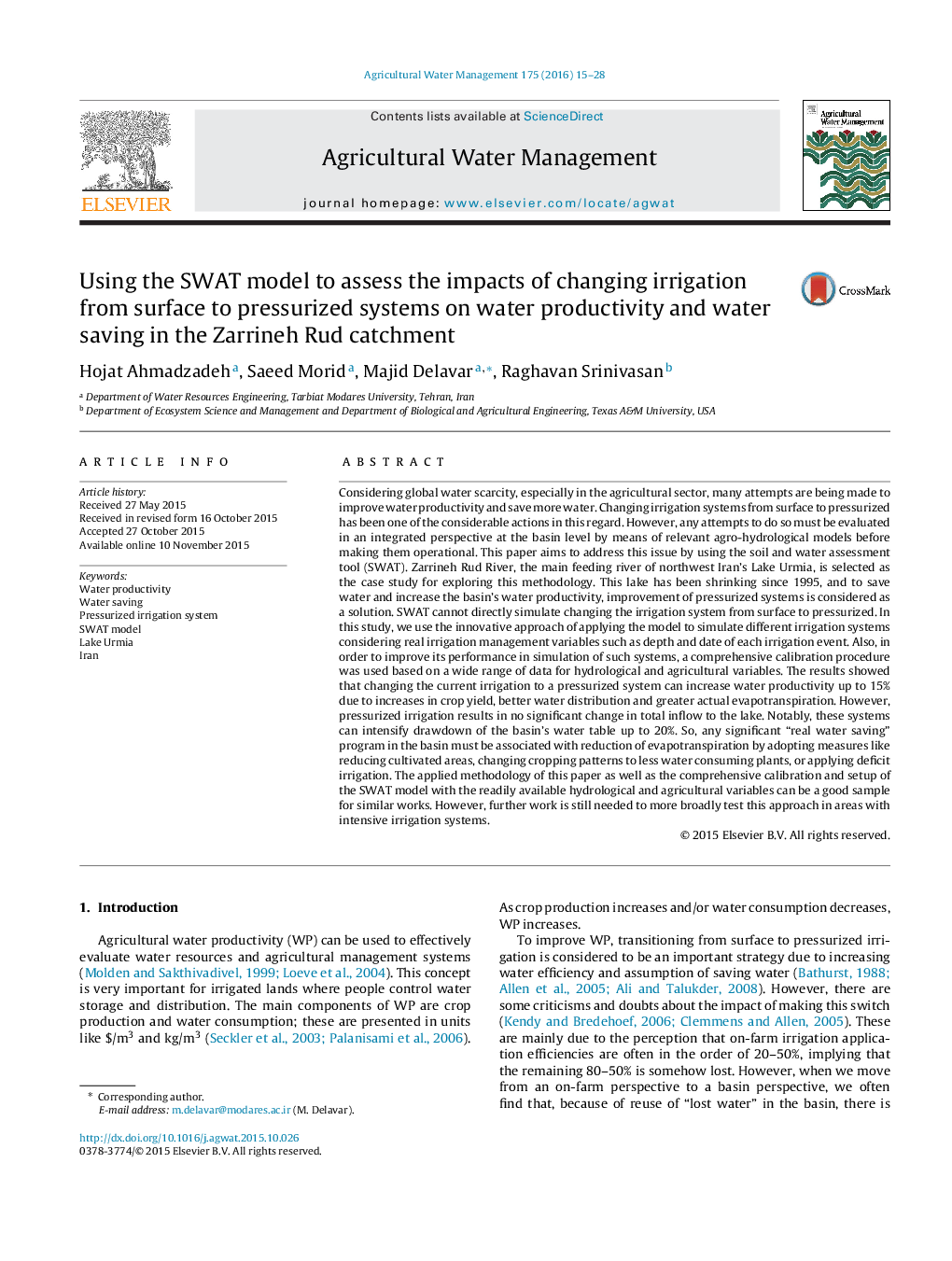| کد مقاله | کد نشریه | سال انتشار | مقاله انگلیسی | نسخه تمام متن |
|---|---|---|---|---|
| 4478263 | 1622905 | 2016 | 14 صفحه PDF | دانلود رایگان |

• We evaluate impact of pressurized irrigation system on water productivity (WP) and inflow into the urmia lake.
• The SWAT model was applied to simulate different hydrological and agricultural processes.
• The results showed up to 20% increase in cropyield and improvement in the WP indices in case study.
• Pressurized systems have no significant impact on inflows to the urmia lake.
Considering global water scarcity, especially in the agricultural sector, many attempts are being made to improve water productivity and save more water. Changing irrigation systems from surface to pressurized has been one of the considerable actions in this regard. However, any attempts to do so must be evaluated in an integrated perspective at the basin level by means of relevant agro-hydrological models before making them operational. This paper aims to address this issue by using the soil and water assessment tool (SWAT). Zarrineh Rud River, the main feeding river of northwest Iran’s Lake Urmia, is selected as the case study for exploring this methodology. This lake has been shrinking since 1995, and to save water and increase the basin’s water productivity, improvement of pressurized systems is considered as a solution. SWAT cannot directly simulate changing the irrigation system from surface to pressurized. In this study, we use the innovative approach of applying the model to simulate different irrigation systems considering real irrigation management variables such as depth and date of each irrigation event. Also, in order to improve its performance in simulation of such systems, a comprehensive calibration procedure was used based on a wide range of data for hydrological and agricultural variables. The results showed that changing the current irrigation to a pressurized system can increase water productivity up to 15% due to increases in crop yield, better water distribution and greater actual evapotranspiration. However, pressurized irrigation results in no significant change in total inflow to the lake. Notably, these systems can intensify drawdown of the basin’s water table up to 20%. So, any significant “real water saving” program in the basin must be associated with reduction of evapotranspiration by adopting measures like reducing cultivated areas, changing cropping patterns to less water consuming plants, or applying deficit irrigation. The applied methodology of this paper as well as the comprehensive calibration and setup of the SWAT model with the readily available hydrological and agricultural variables can be a good sample for similar works. However, further work is still needed to more broadly test this approach in areas with intensive irrigation systems.
Journal: Agricultural Water Management - Volume 175, September 2016, Pages 15–28